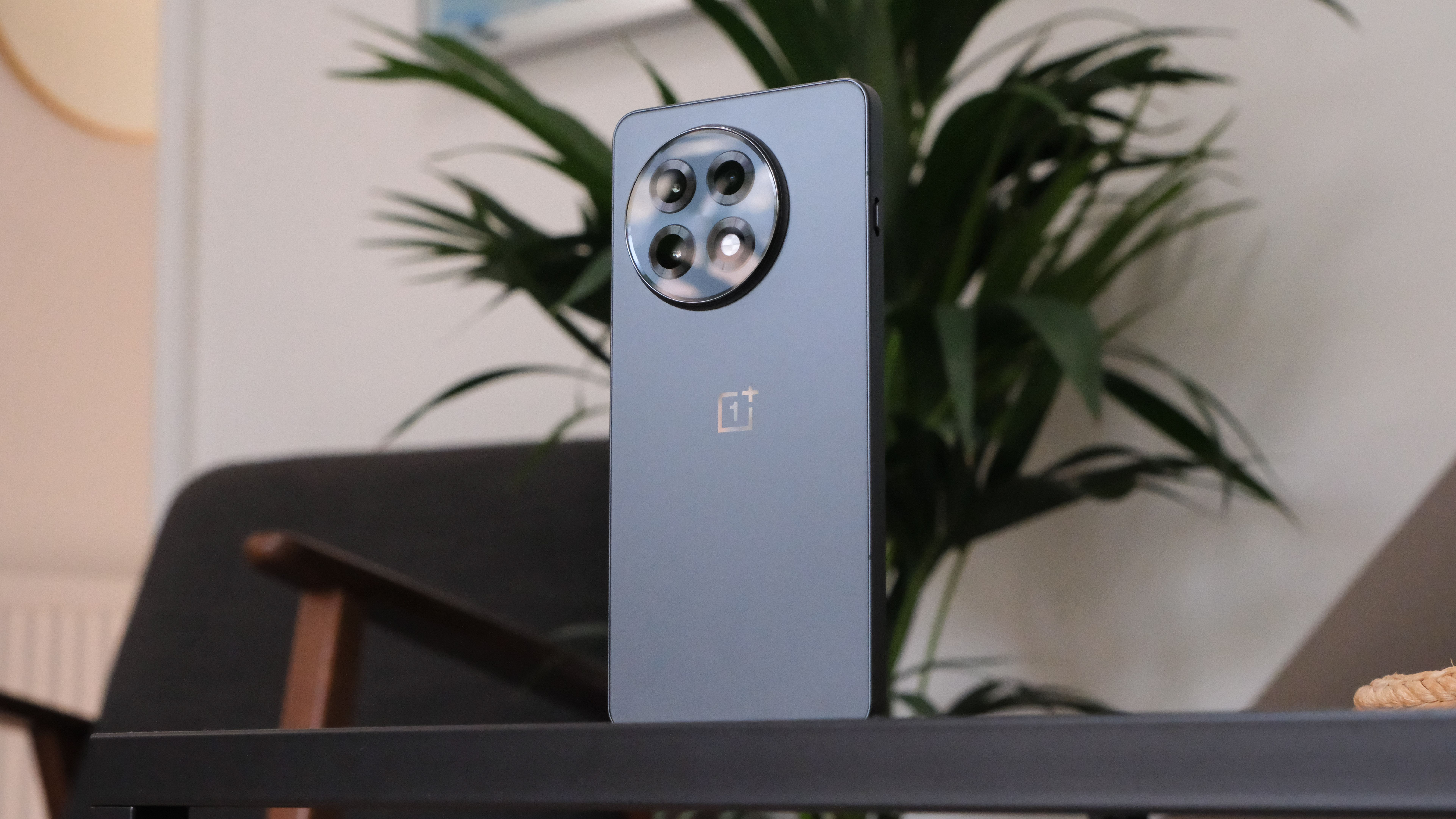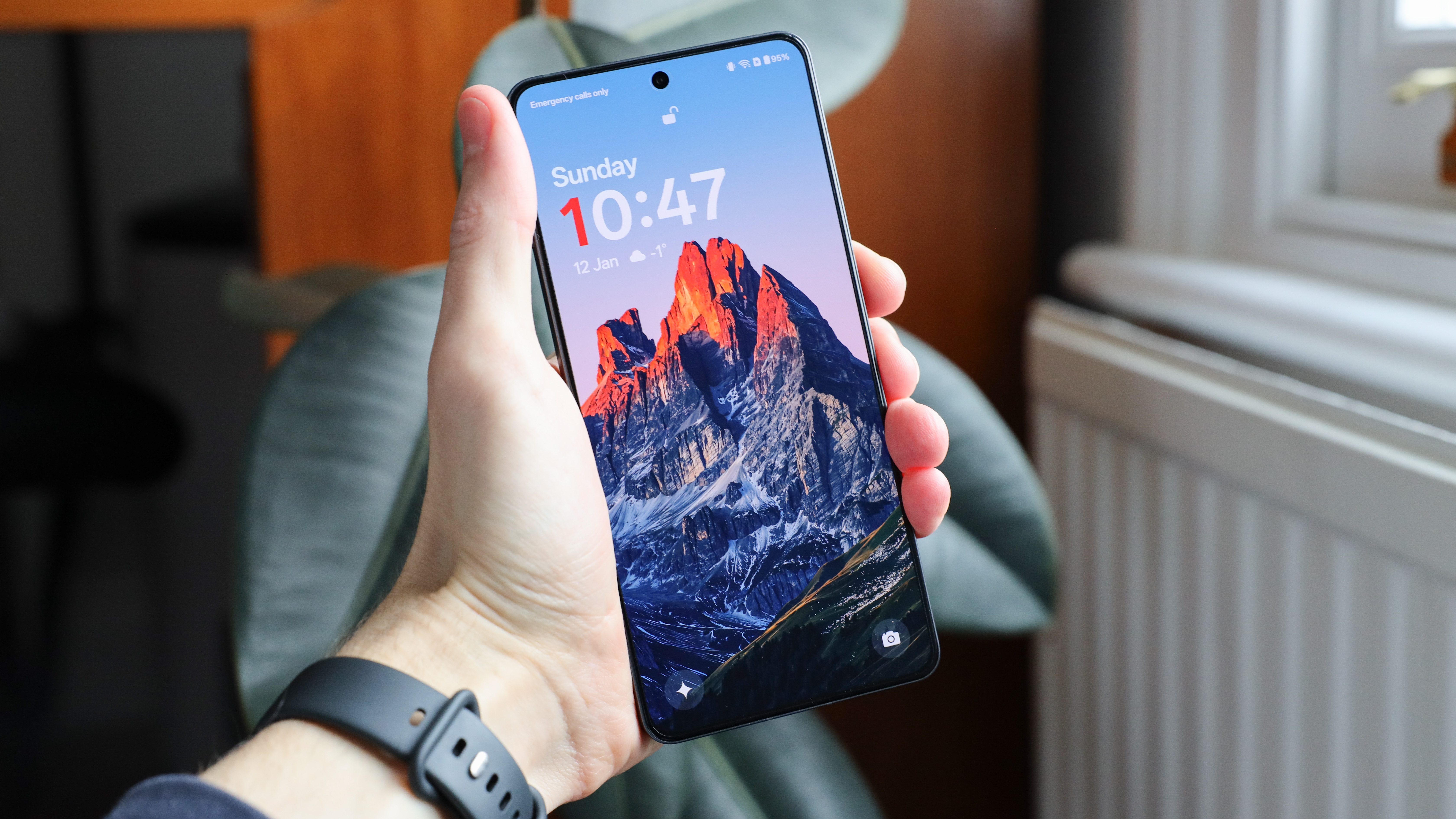
With the latest OnePlus 13 up challenging the very best flagships around, the OnePlus 13R aims to fill that niche underneath, with a phone that offers a lot of the perks of a flagship like top design and speedy specs, but with a more affordable price point.
Think of it as the Google Pixel 8a to Google's Pixel 9 series, or the Samsung Galaxy FE24 to the S24 series. The 13R is the follow-up to last year's OnePlus 12R, and with a few of these R-designated phones now being released worldwide, it seems OnePlus is taking this segment seriously.
This shows in the 13R, with the phone taking a step forward on nearly all the 12R specs, as well as introducing a heap more compelling features. But with so much competition in this area, can the OnePlus 13R do enough to stand out from the crowd?
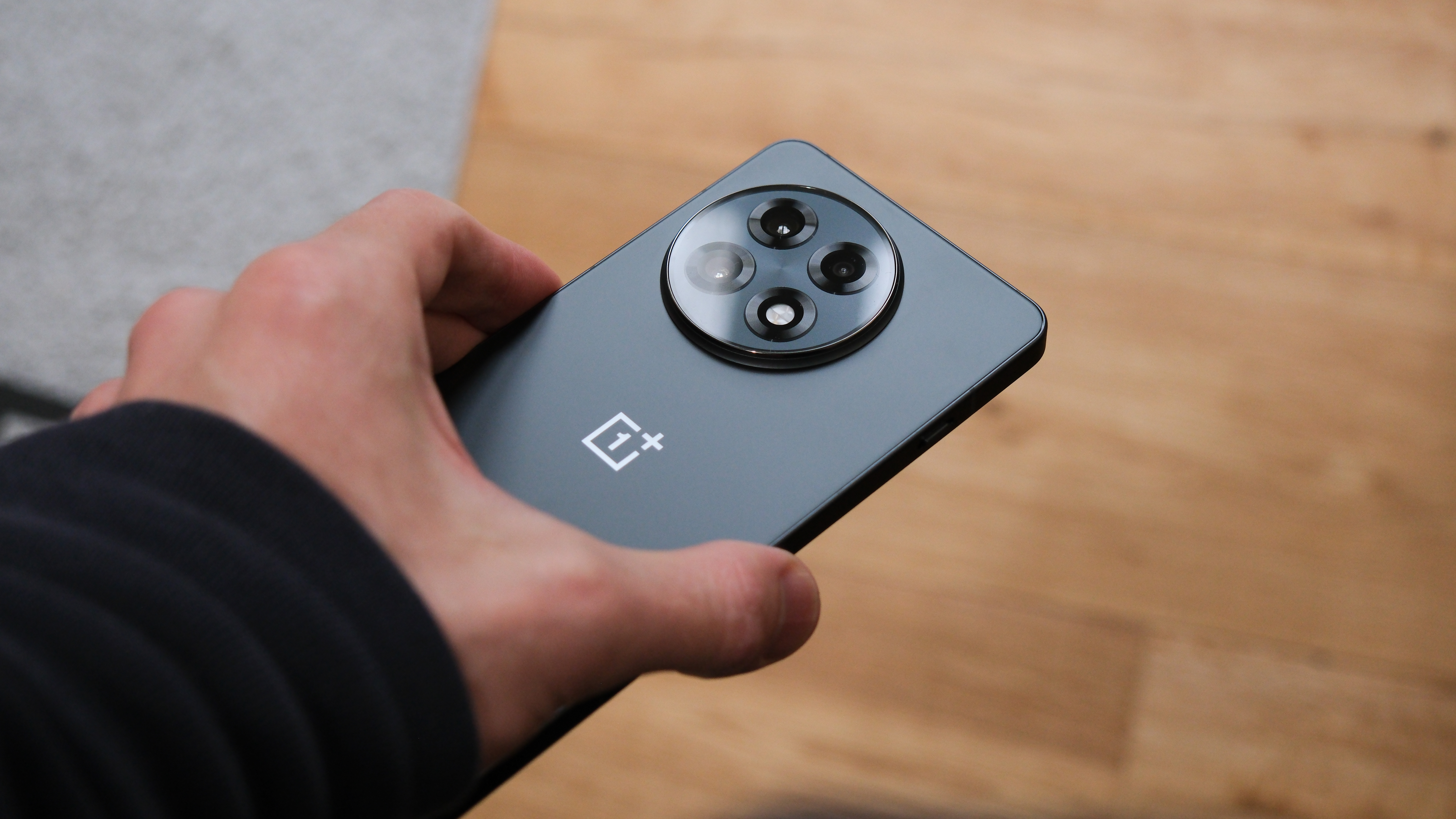
OnePlus 13R: Specifications
OnePlus 13R: Price
Launching at $599 / £679, the OnePlus 13R is at the top end of what I would consider ‘mid-range’, and whether you believe it offers value really depends on if you are interested in the 13R as a phone, or as a camera phone. The 13R phone specs are very good – a fast processor, lots of storage, and a big battery, but for cameras, you can do better for less money. My top recommendation for a value smartphone – the Google Pixel 8a – can’t compete in most ways with the 13R – except for the cameras, which are best in this class. You can snap up the 8a for considerably less money, but there are performance compromises to make.
OnePlus 13R: Design & Handling
For the OnePlus 13R, build quality is certainly not something that seems to have taken much of a hit to make the device more affordable, as the fit and finish are excellent, and the device feels premium beyond its price.
There are no fancy textured back covers like in the OnePlus 13, with the rear of the phone coming in a smooth glass matte Nebula Noir (black) or Astral Trail (grey) finish which feels nice in the hand, and while it looks pleasant, it is perhaps a little dull. Running around the edge, there is a matte metal rail that color matches the rear, and you’ll find the usual power button, volume rocker, and the OnePlus staple alert slider – which is one of my favorite OnePlus features and I miss it on all my other phones.
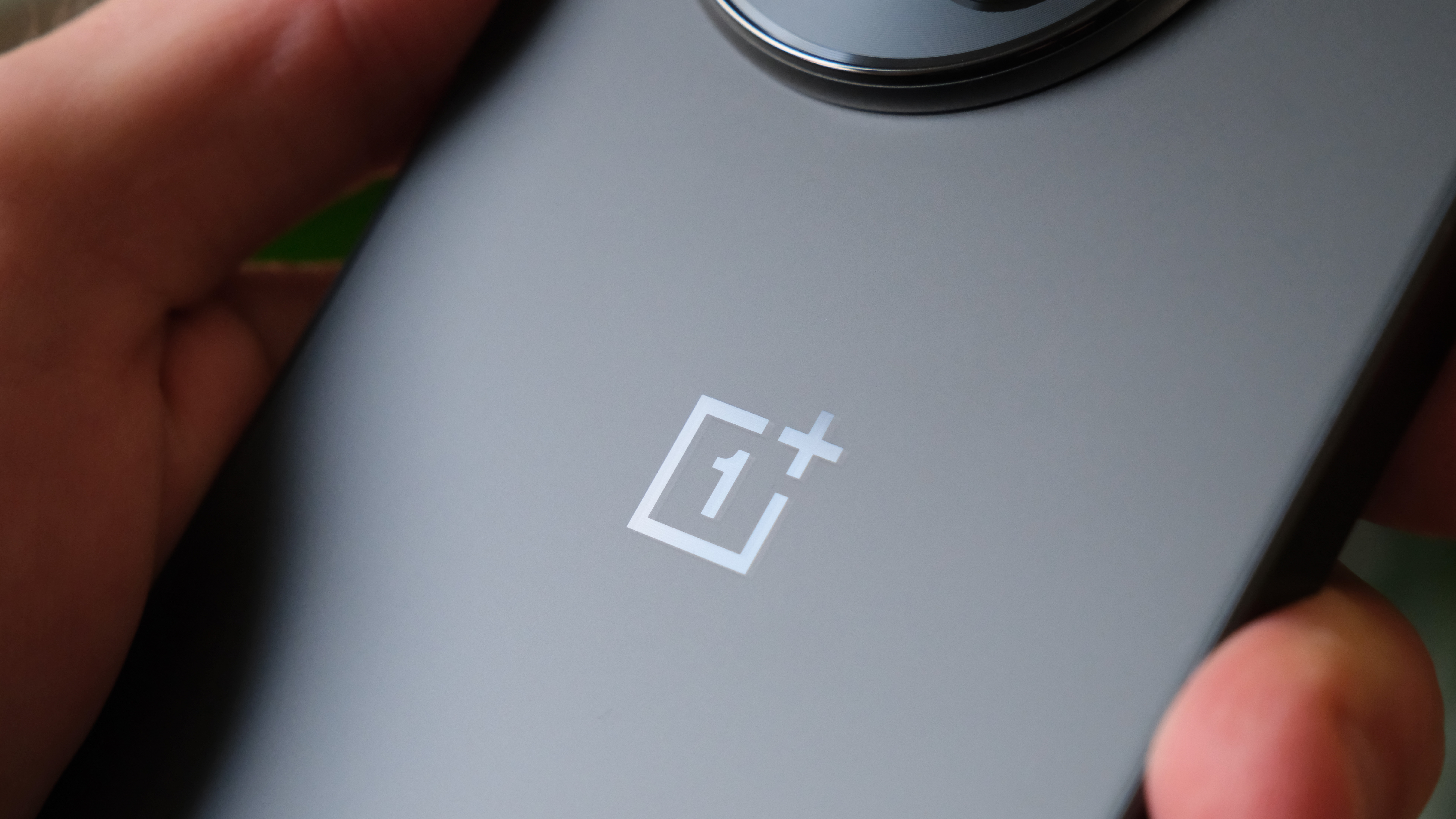
But you’re likely going to put your 13R in a case anyway. While the phone has wireless charging, it doesn’t have magnets – though OnePlus has you covered here with a decent selection of MagSafe-compatible cases. I have the sandstone textured case which is nice and grippy and the magnets stick strongly enough to chargers and power banks – although aren’t quite as strong as those in Apple’s latest iPhones.
Unfortunately, the OnePlus 13R doesn’t share its big brother’s upgrade to IP68/69 waterproofing, instead languishing on IP65, which protects it from some minor splashes, but it would be nice to have a little more reassurance for a phone that is still a hefty investment.
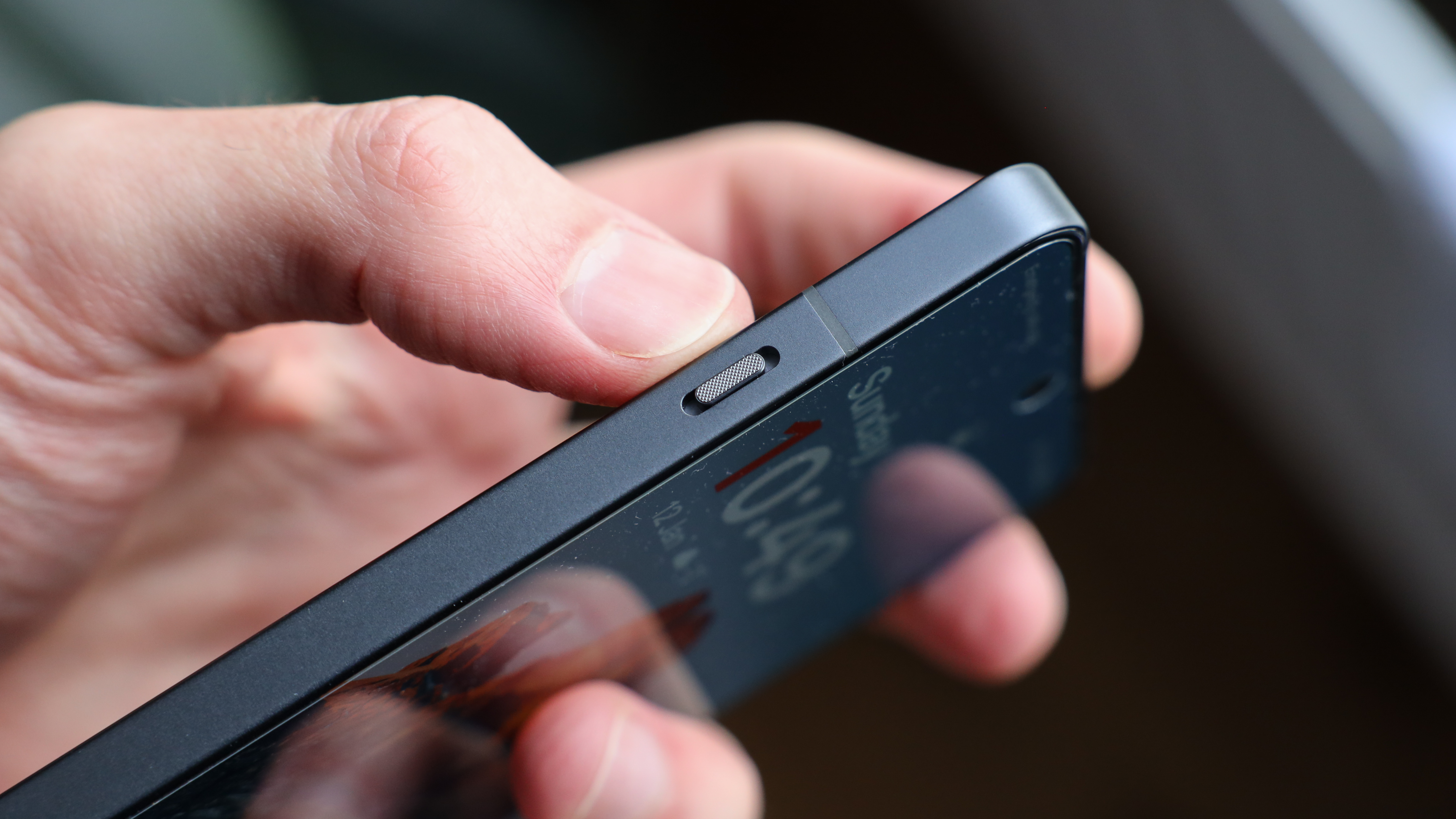
Screen
Onto the star of the show – the OnePlus 13R’s screen. The screen is completely flat with not even a slight bezel curve, and the bezels themselves are remarkably thin, going nearly edge to edge with the frame. While I don’t mind a slight taper, I really do not like a curved screen, so I’m glad most phone companies seem to be showing them the door.
At 1.5K, the display is gorgeous. The screen is incredibly sharp, and the colors are sublime, with just enough saturation while still looking incredibly natural and accurate. There is also a more vibrant screen option in settings which adds a little more pop to the colors. I did prefer this vibrant look, but for the best accuracy in my photos, I begrudgingly am using the natural color mode.
Brightness reaches a very decent 1600 nits or 4500 peak, and I didn’t struggle to see the screen outside in the rare spell of strong bright wintery sunshine I am having this week. The screen has a variable refresh rate of 1-120Hz, which along with improvements in the processor and OxygenOS 15, means that animations are just so smooth, no matter how much I tried to make this screen stutter, I couldn’t.
There are also the usual OnePlus tricks of AquaTouch to reject water when your hands/the screen is wet, (although thanks to it only being IP65 rated – don’t get the phone too wet) and Glove Mode which accepts touches even through gloves up to 0.5mm thick.
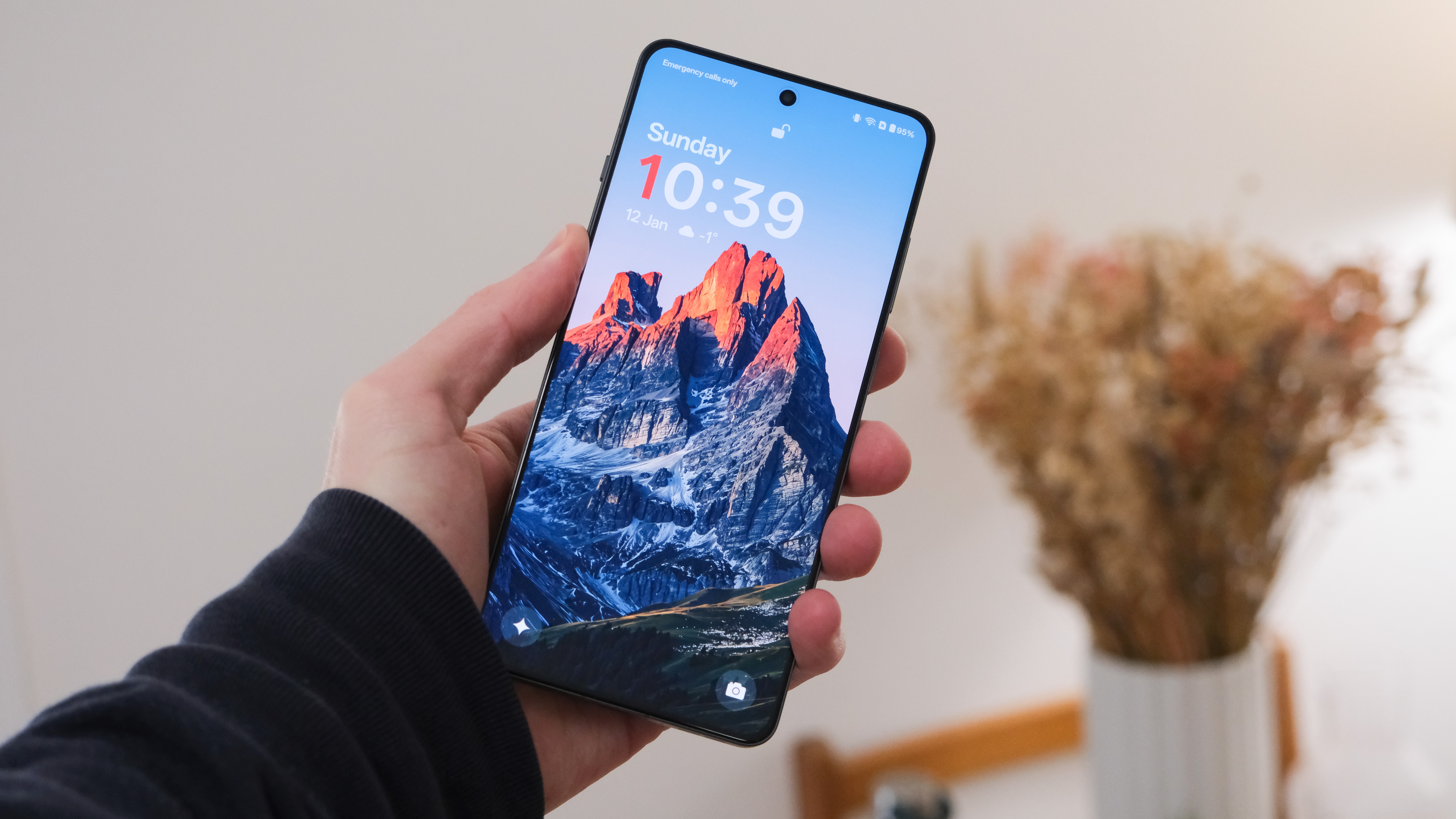
OnePlus 13R: Camera Specs
OnePlus has switched things up this year, ditching the macro camera from the 12R and replacing it with a telephoto camera for a total of three cameras on the rear.
The wide camera sensor is a 50MP Sony LYT-700 with a 1/1.56" size. The sensor is also backed up with both optical image stabilization (OIS) and electronic image stabilization (EIS). The lens has an equivalent focal length to a full-frame camera of 24 mm, and an aperture of f/1.8.
The telephoto camera again features a 50MP sensor, but instead of the Sony, this one is a S5KJN5 from Samsung. The sensor is 1/2.75", and has EIS, but no OIS. The zoom is a very conservative 2x optical zoom, which has an equivalent focal length of 47mm, and an aperture of f/2.0.
Finally, the ultra-wide camera features a 1/4" 8MP sensor, with a fixed focus. The lens has a focal length equivalent to 16 mm and an aperture of f/2.2.
On the front, there is a 16MP selfie camera, although the field of view isn't built for group shots at 82°. The focus is fixed, and the aperture is f/2.4.
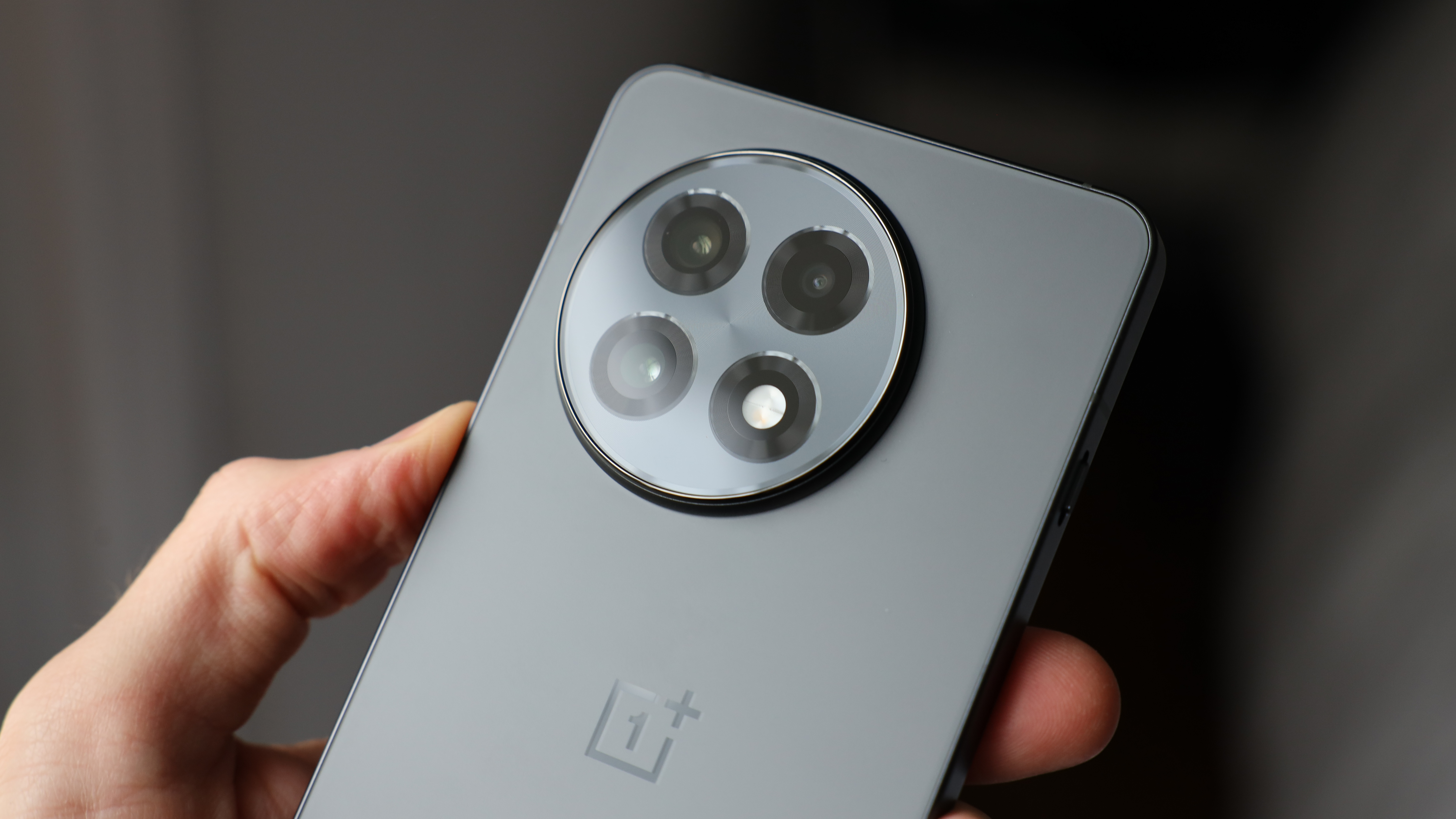
OnePlus 13R: Camera Performance
After spending the last month with the OnePlus 13 and its outstanding camera system, I may have had too high expectations for the 13R – but overall I found the OnePlus 13R cameras a little underwhelming. That’s not to say they are bad, the cameras are fine for snapping away at life unfolding around you, but the quality is just not good enough to stand out against rivals sporting better systems.
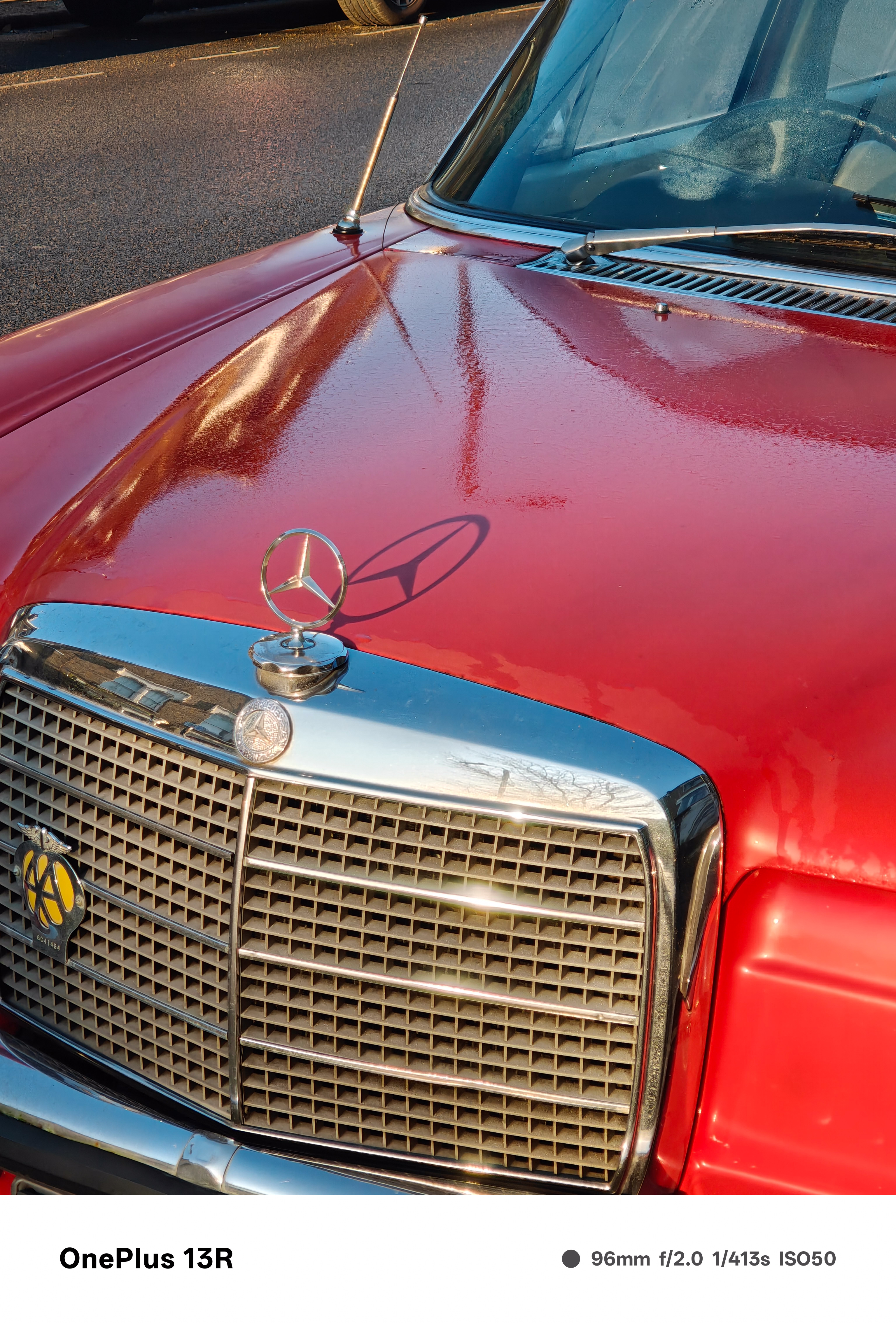
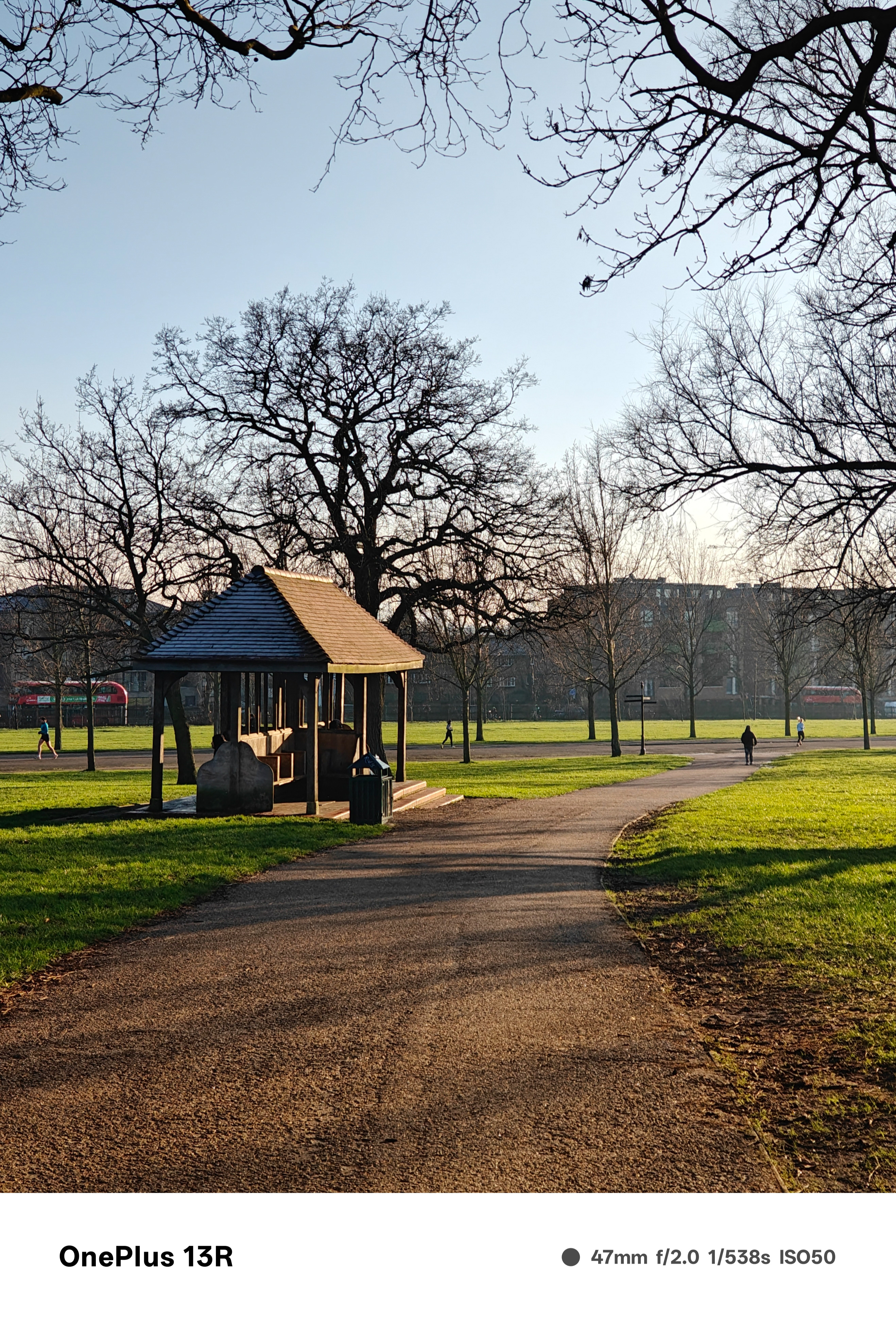
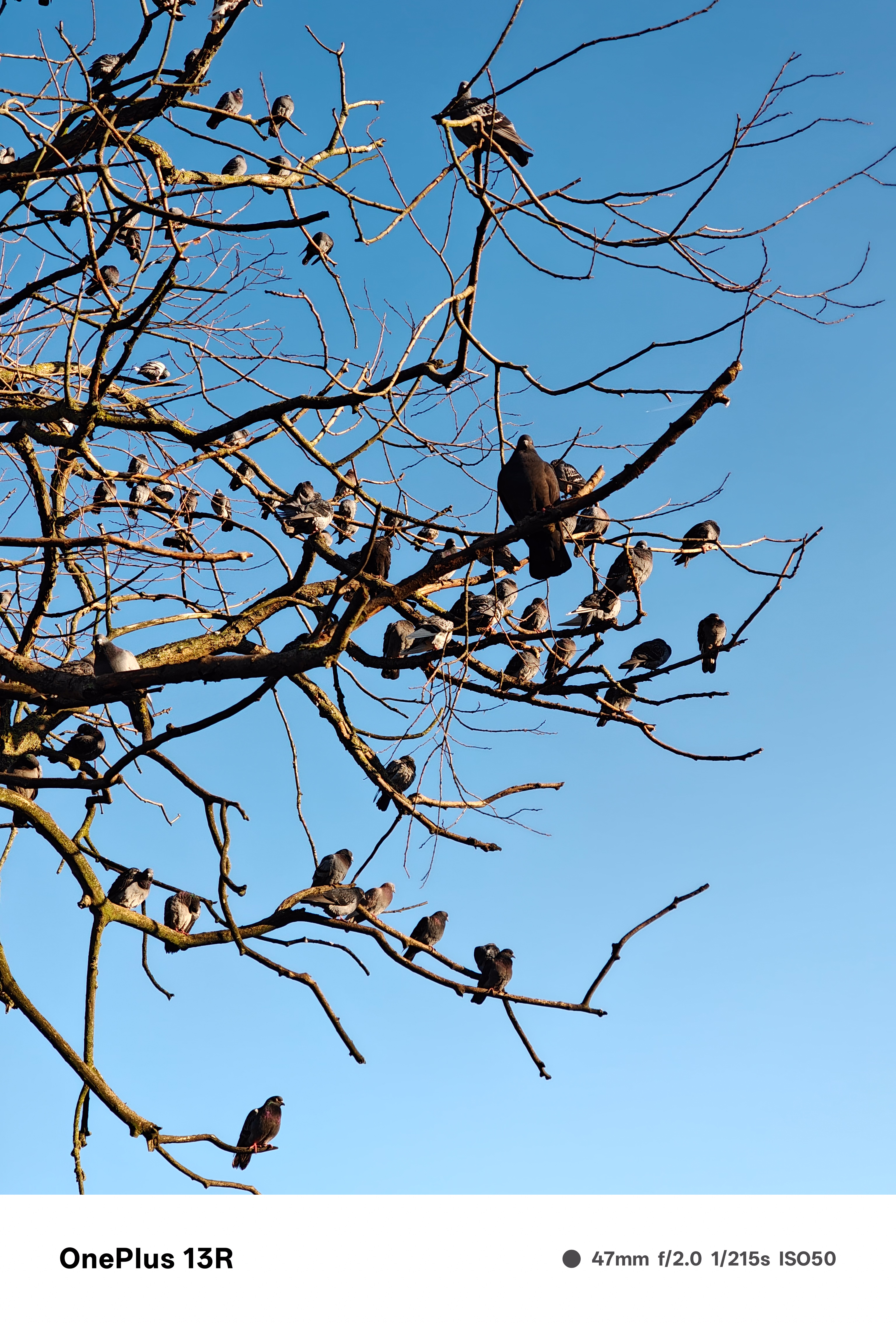


The 13R has replaced the much-maligned macro camera on the 12R with a telephoto instead, which is a hugely welcome addition. Although at just 2x optical zoom I’m not sure I really count this as a telephoto camera. When most phone cameras can do a very good digital 2x crop from pixel-binning the wide sensor, and the 13R having a 50MP wide sensor perfectly capable of that, I just expected a little more from a dedicated optical zoom.
The good news is though that the telephoto camera is actually really quite good, and probably my most used camera on the 13R – images are sharp enough, although digital sharpening can occasionally be a touch heavy, but colors are really nice – vibrant but accurate. The telephoto camera can also pixel-bin up to a 4x digital zoom without too much of a hit to quality. – although I wouldn’t recommend going beyond that.
The lack of optical image stabilization (OIS) in the lens makes photos at 4x tricky enough to not introduce shake, but the digital zoom can go up to 20x. The zoom also doesn’t seem to share any of the OnePlus 13’s AI magic, as the quality of results after 4x drops off very quickly.
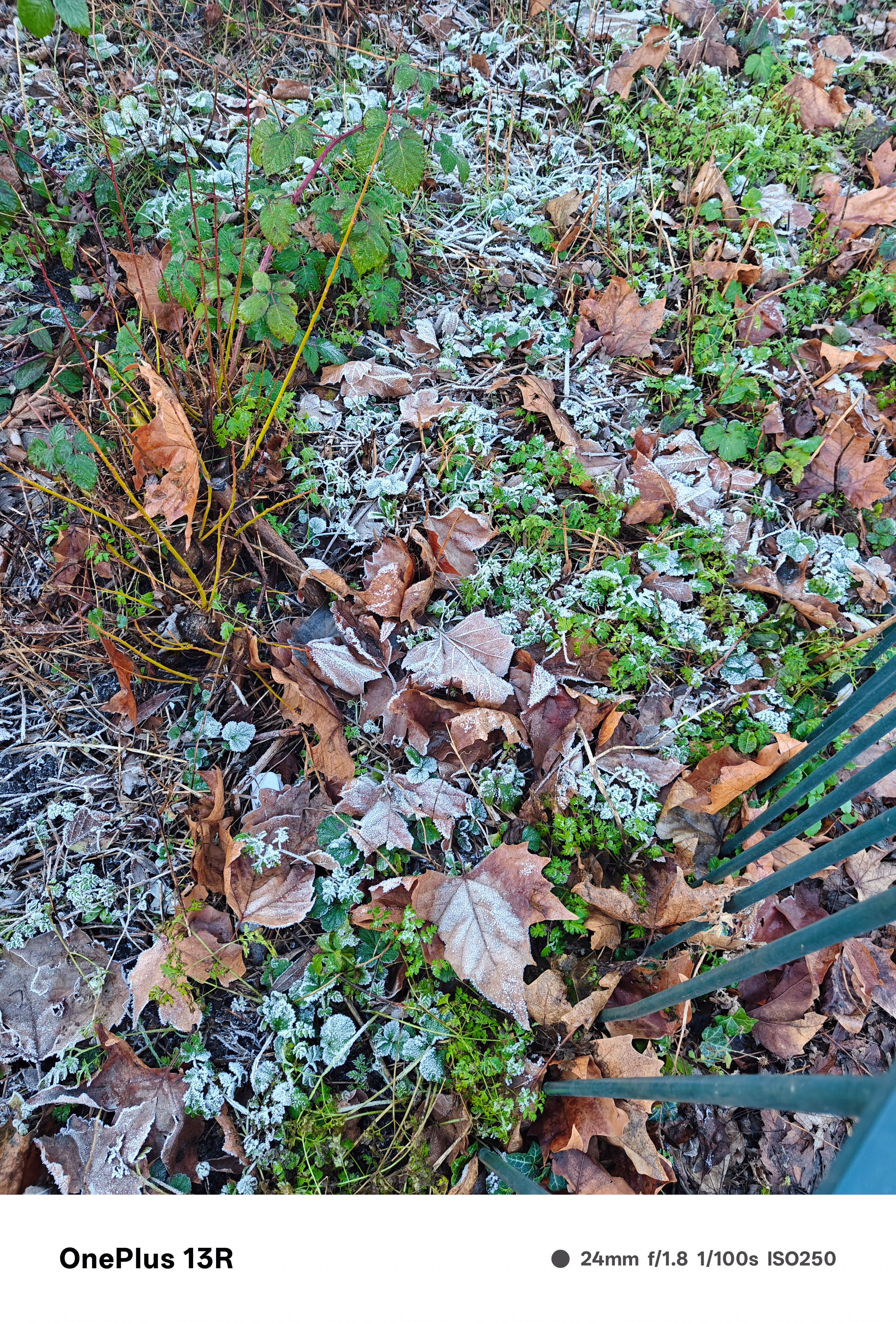




This is also now the camera that handles macro, which is a much nicer perspective for macro than the ultrawide camera like on a lot of other phones – however, I am not blown away by the macro images. While the center of the image is sharp, the background and edges are kind of blurry with some odd ghosting. With time and patience, you can still take some stunning macro shots with the 13R, but I found I had to be much more precise than with other phones.
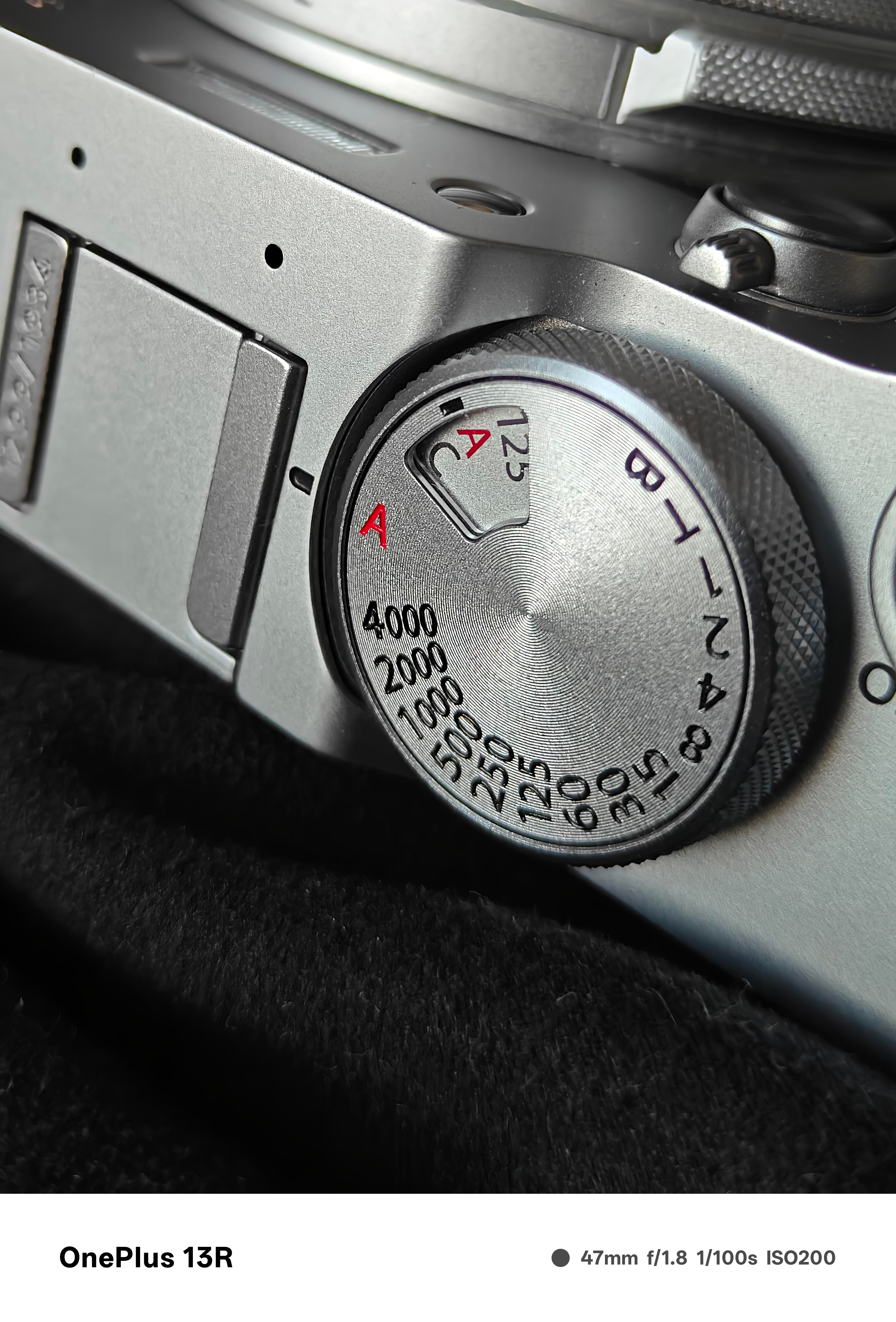

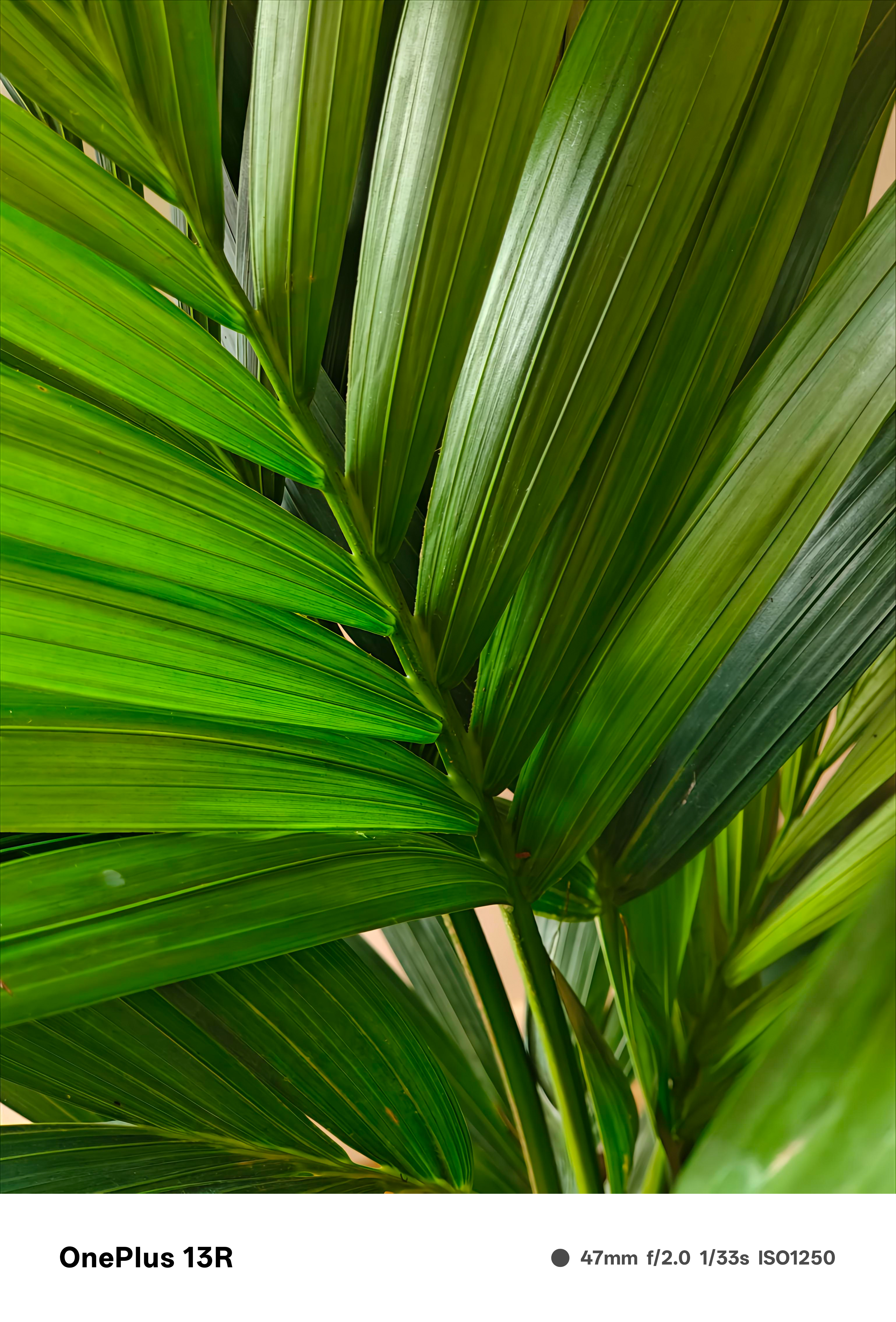
Alongside the 2x camera, the main wide camera performs well and shares a consistent look and feel to images with the telephoto lens. You can also tap the wide camera to neatly swap between popular camera focal lengths 24mm (1x), 28mm (1.1x), and 35mm (1.4x), these are all digital crops, but it is useful if maybe wanted to match the focal length of your camera, or just want a little bit of additional zoom without having to pinch or drag the zoom wheel. The wide camera is also optically and electronically stabilized, so this is the best sensor to stick with in low light.
The ultrawide camera is the weakest of the bunch. At only 8MP compared to the 50MP of the other two cameras, I wasn’t expecting it to match up perfectly, but the images are noticeably worse. At full size, you might not notice, but you really don’t have to zoom or crop much to see the photos are just far less sharp, while the phone processing tries to overcompensate for this with too much digital sharpening.
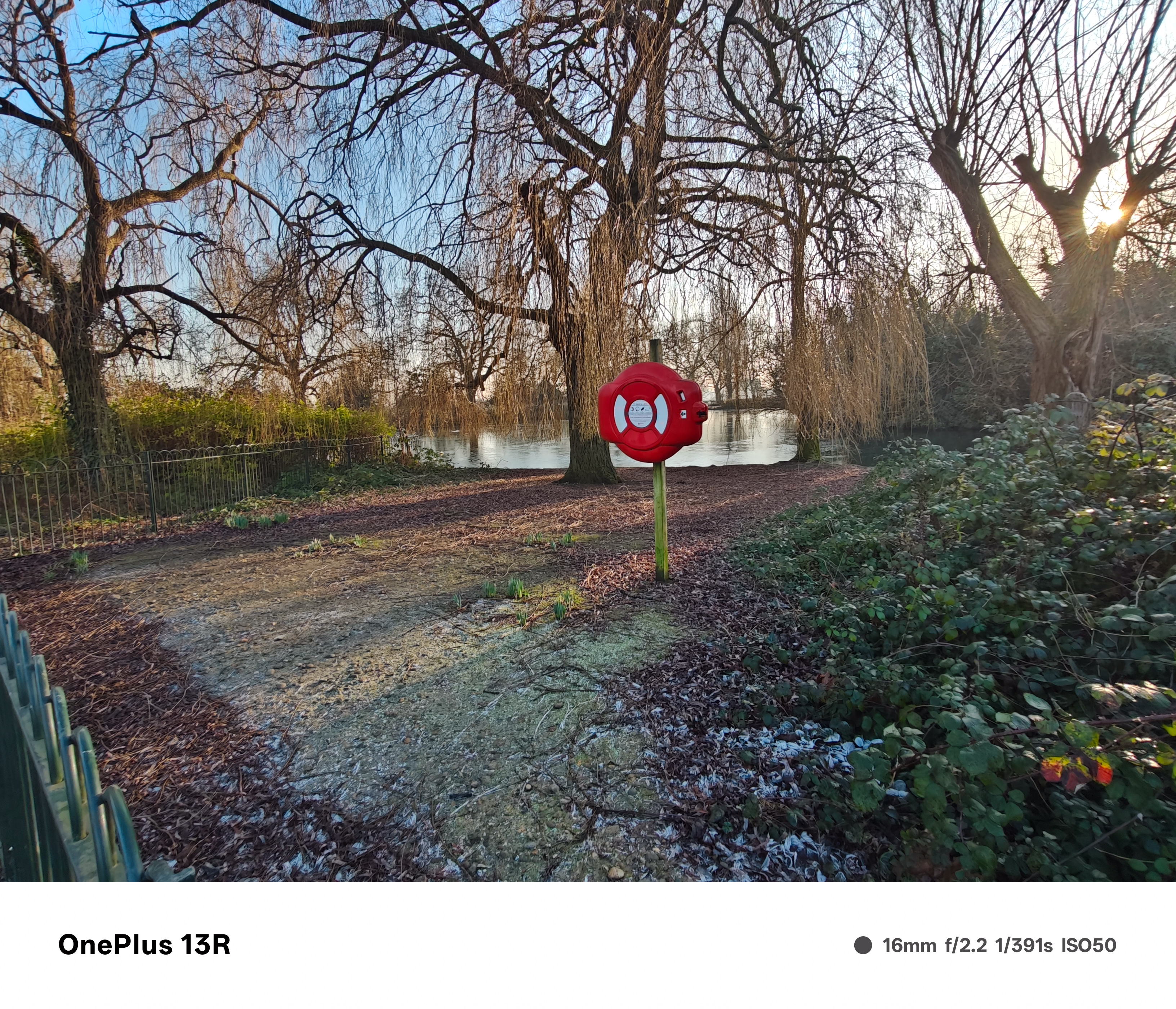

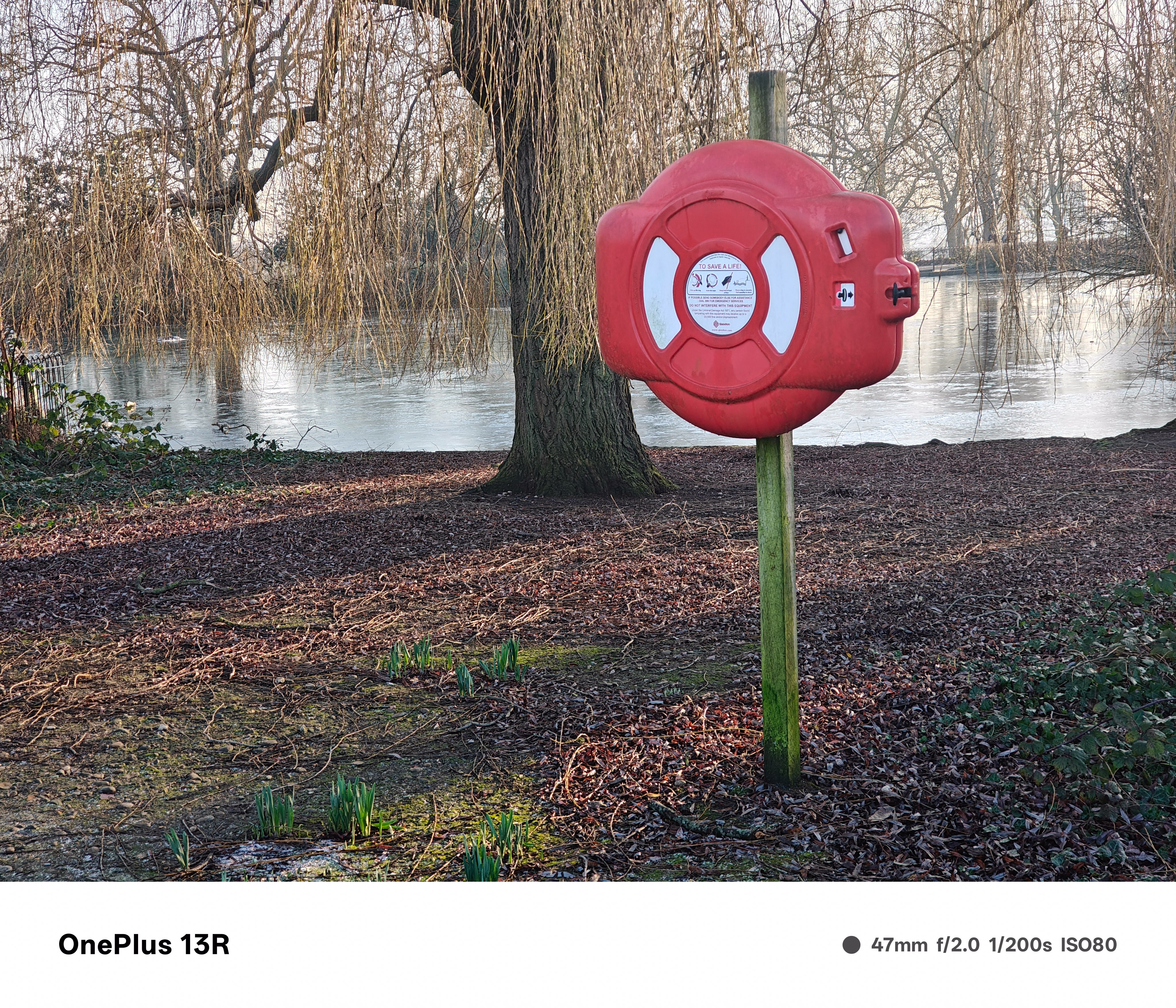
OnePlus 13R: Phone Performance
Performance is very impressive, the SnapDragon chipset kept things humming along in day-to-day tasks without any bottlenecks or slowdowns. Even when I got into some photo or video editing the phone was surprisingly speedy.
The 13R comes with the latest OxygenOS 15, OnePlus’ latest take on its Android skin, and OxygenOS is a joy to use. The OS mostly leaves Google’s ideas of how Android should work alone and just offers some useful bits on top. A few of the settings have moved around, and there are a few bundled apps that can be uninstalled, but it's a very clean and efficient OS.
Alongside the new OS, there is also now AI baked throughout the phone, most notably with Google’s Gemini AI, but OnePlas has a few AI tricks of its own in the photos app with AI tools for erasing and replacing parts of images, un-blurring photos, boosting details, and removing reflections when taking photos through glass.

Out of all of these, the AI eraser is probably the most useful and most effective, with the 13R doing a good job of outlining what needed to be removed and reimaging the background. The AI Unblur and AI Detail Enhance are much more subtle and limited in their effects – although the detail enhance really comes into its own with sharpening up macro shots that are a little lackluster. The reflection removal is interesting and could produce some decent results, but it was a little too inconsistent, often just replacing reflections with dark shadows instead.
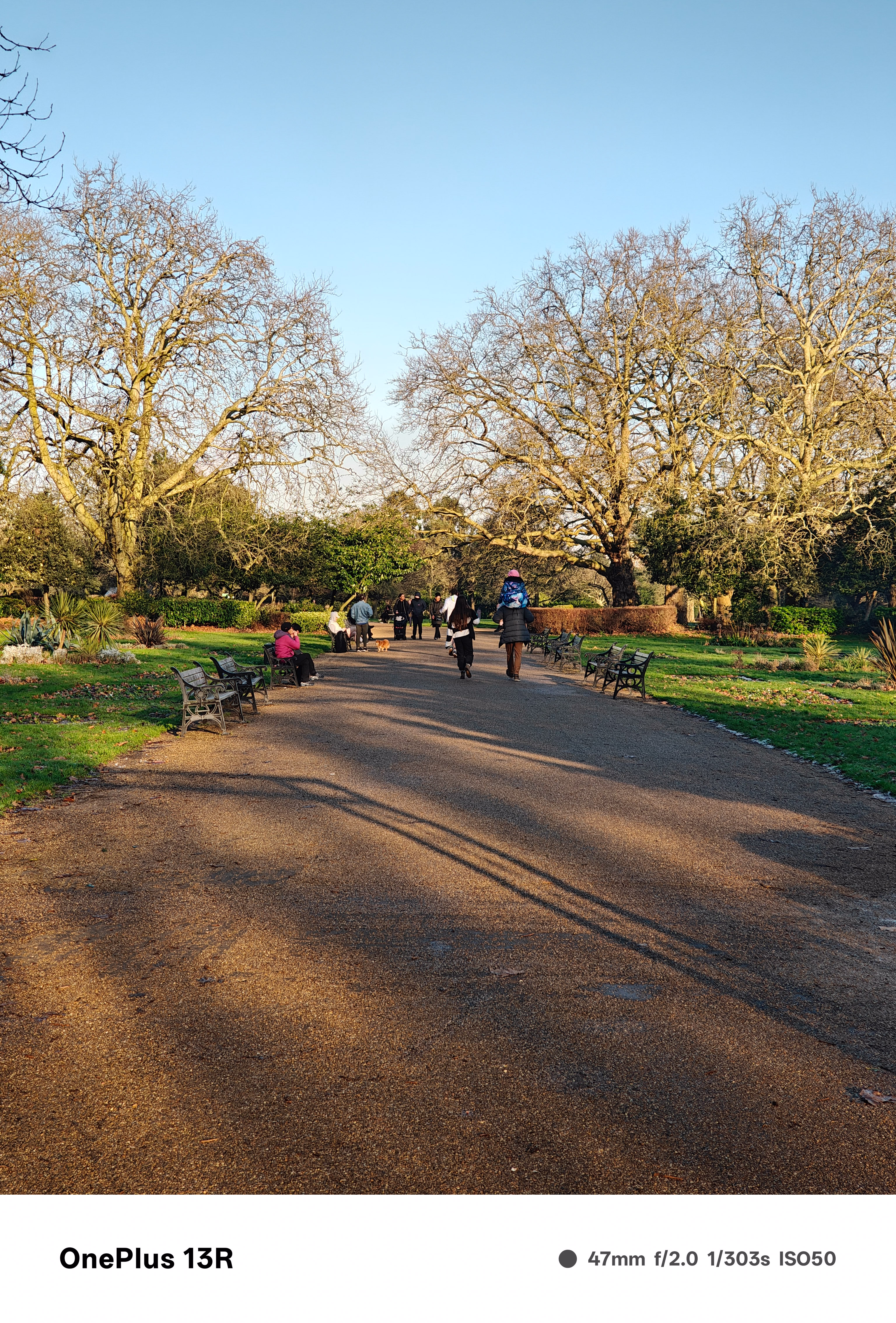
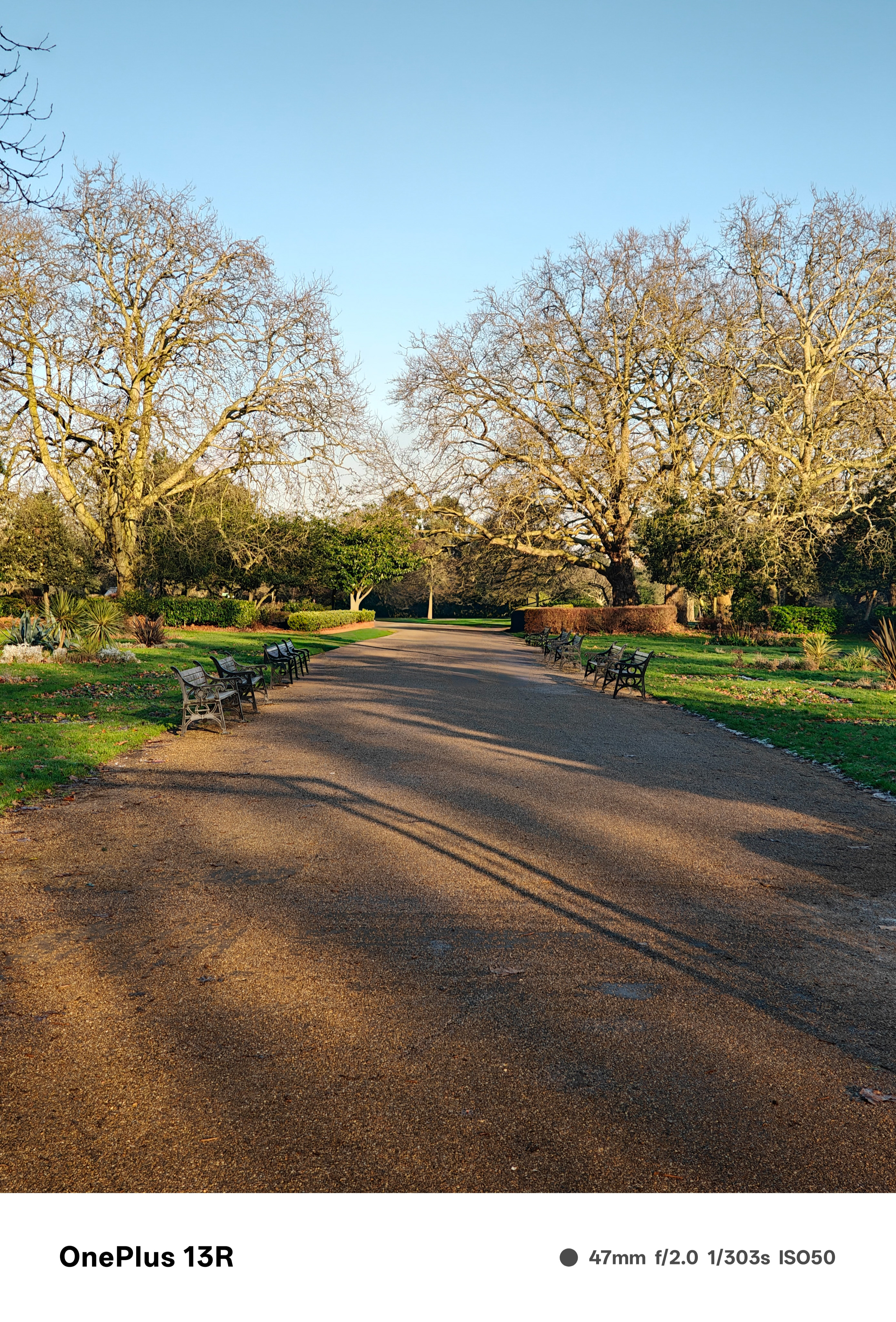
One of the best features of the 13R is its battery life. OnePlus has managed to squeeze a 6,000mAh battery in thanks to its Silicon NanoStack tech, but size alone isn’t everything, and OnePlus has tuned this phone to be so power efficient that I could easily get through a day of heavy usage with battery remaining. After several hours out with the phone shooting numerous photos and video, I still had over 25% left when going to bed.
I was also surprised by how little the battery dropped when the phone wasn’t in use, I have had the phone for around a month and would go a couple of days in between picking it up, but the battery percentage had only marginally dropped.
The 13R also benefits from OnePlus' SuperVOOC charging, which can charge the phone at up to 80W, which translates to a full charge from 0-100% in under an hour.
OnePlus 13R: Verdict
The OnePlus 13R is a great choice if you're looking for a phone that gives every impression of being high-end but that doesn't break the bank. Of course, with a mid-range price, there are bound to be a few trade-offs, but the 13R does a good job of giving you a complete experience without emptying your wallet.
The 13R has a surprisingly premium build, and it just feels solid and comfortable when you hold it. Going almost edge to edge, the large flat display is stunning to look at as well, incredibly sharp with great color, I just found it a joy to use. The phone is lightning-fast, and OxygenOS is one of my favorite non-Pixel takes on Android. Battery life is another win, and gave me a full day of juice before I needed to plug it in.
The downside – the 13R’s cameras are just pretty meh. It has a camera setup with wide, ultrawide, and telephoto lenses, just like high-end phones, but the picture quality certainly isn't quite top-of-the-line. OnePlus has swapped out the macro lens for a 2x optical zoom, which is a definite improvement, but at only 2x the zoom isn't exactly powerful. Most of the time, the pictures look good – they're clear and sharp with nice colors, but the quality can be a little lackluster, especially from the ultrawide, and other phones in the same price range take better photos.
But where the OnePlus 13R really shines is everything taken together. It's a solid and reliable phone that gives you a high-end feel without the high-end price – although unfortunately for OnePlus, so do a lot of other phones.
